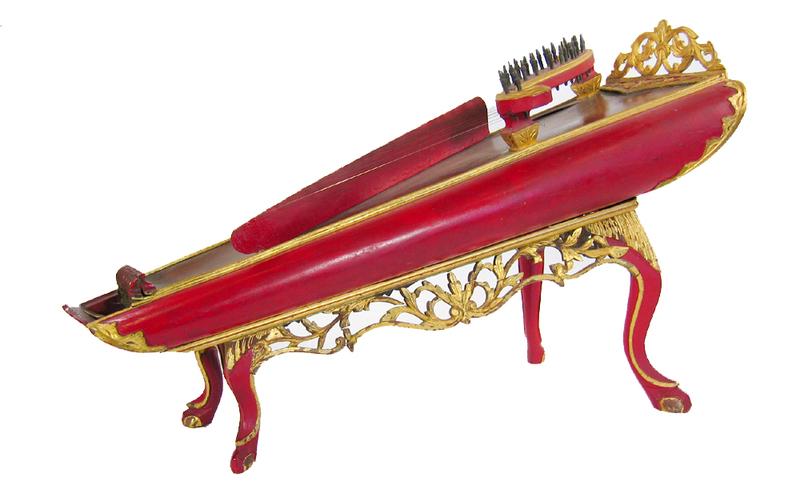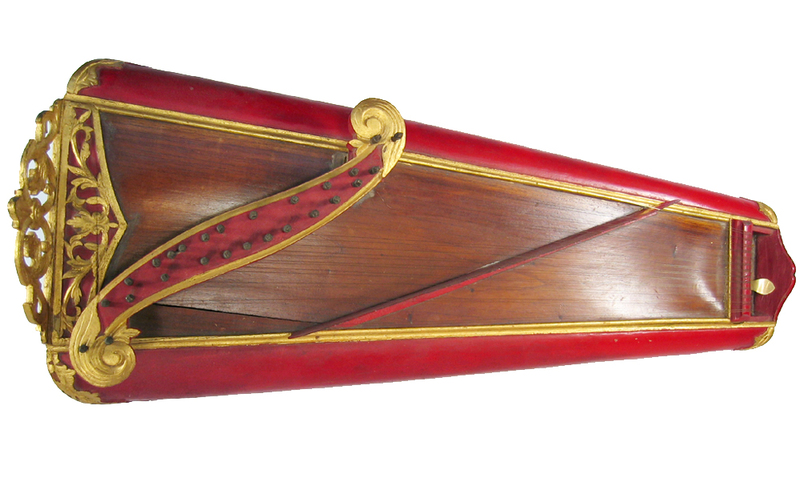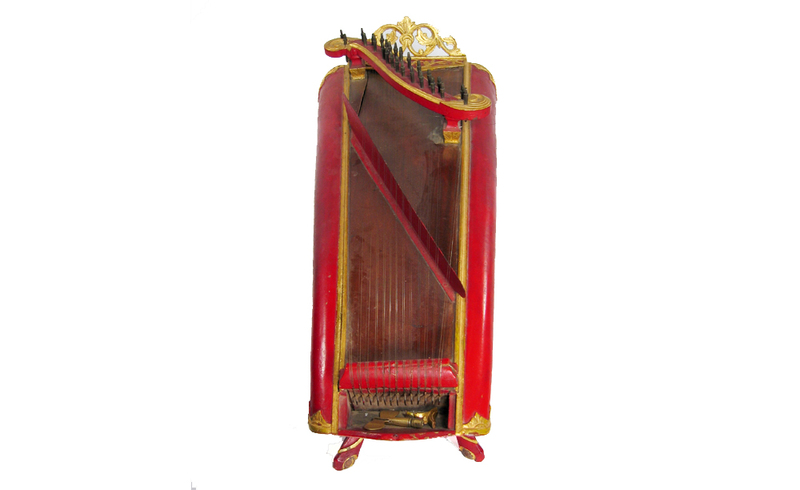Celempung
Title
Physical description
The celempung is a type of plucked-zither that is set on four legs with the front legs higher than the two rear legs; hence, the instrument slopes downward toward the player. The celempung has thirteen pairs of strings, which are stretched between the tuning pins at the higher and lower ends of the instrument. The strings rest on the bridge that is placed across the sound board (body of the instrument).
Historical background
Although evidence of its existence can be found in the early period of Javanese history, plucked-zither type instruments have never had wide distribution in Java. It seems that this instrument never achieved an important position in the development of Javanese music. The limited use of celempung in today’s full gamelan ensemble supports this assertion.


